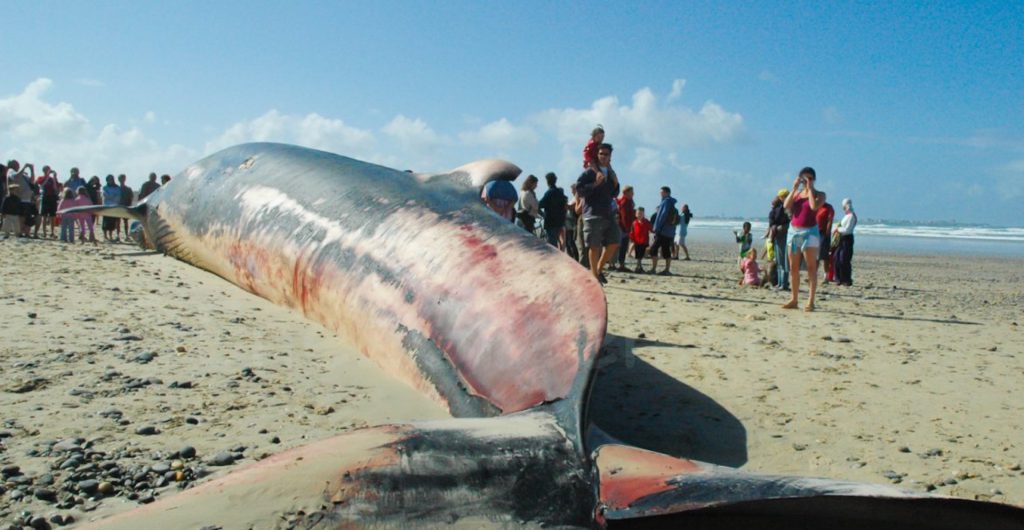The annual average number of cetacean strandings in France increased from 273 individuals for the period 1980 to 1990 to 1036 for 2011!
According to studies made in France from tagged animals and derived from the study of the carcasses washed away by currents, about 8% of dead animals at sea eventually fail.
Since the early 1970s in France, then from 1990 in overseas, marine mammal strandings have increased steadily from 1980 to 2012, for a total of 17 054 and stranded animals reported. It’s the common dolphin is most often found (death, often after catch), while it is a species that seems to rapid regression: (- 5.5% / year). Their number could be divided by five to 30 years and driving species to risk extinction in about 100 years.
The number of harbor porpoise, bottlenose dolphin, gray seal and harbor seal calf found beached also increased significantly since the late 19908. Ranked threatened species by the IUCN, the sperm whale is vulnerable in France and around the world while fin whales are considered near-threatened with extinction in France.
According to the National Observatory of the sea and coast, the annual average number of cetacean strandings has increased from 273 individuals for the period 1980-1990 to 544 for 1990-2000 and nearly 767 for the period 2000 – 2010. with 1,036 strandings, the result of 2011 was the largest ever recorded knowing that strandings have intensified since. Generally, stranding outnumber February to April (winter high mortality).
Autopsies have revealed the disastrous effects of certain chemical susbstances
The Cetacean Stranding Investigation program is probably the most informed body on the subject with over a century of data collected. During the last quarter century, the CSPI has identified nearly 12,000 strandings, autopsies performed 3500 and collected 80,000 samples. Autopsies have revealed the disastrous effects of certain chemical susbstances. Less visible than the oil spill but most active at low doses of pesticides, dioxins, PCBs, endocrine disruptors, mercury, lead, cadmium, etc. are harmful for cetaceans. Despite the ban of PCBs, their effects are still measurable on the reproduction of cetaceans, not to mention the general degradation of marine ecosystems.
According to scientists many factors come into play and it often takes to combine. Overfishing of coastal and offshore waters may affect cetaceans by depriving them of part of their food, and by threads or disturbance of the animals during their hunts, their migration or reproduction. The intensification of commercial fishing for krill, a key component of the diet of whales, also called into question and the influence, still unknown, of global warming on the amounts of these small shrimp in the waters.
Accidents are also common: as “50% of stranded porpoises on the Normandy coast in 2006 showed traces of by-catch of fishing gear (HHC 2007). Work is also underway to better assess the impact of ocean noise on cetaceans. Anomalies, storms or lines perpendicular to the coast are so many parameters that may interfere animaux.
In trajectory groups prioritized cetaceans and / or strong social cohesion, if the leader of a group “loses the compass”, the group whole finds himself in danger. The waves of sonar used by military or detonations of air guns (oil and gas seismic exploration) are, in turn, organ fractures officials, the cause of internal bleeding. Cetaceans then die a long agony, and some of them are found on the coasts.
A century of research on cetacean strandings still leaves largely unanswered and mystery mass strandings persists. Number of cetacean species are under threat in the world judging by the countless recorded strandings. While pollution and human activities are not the direct cause of death of these cetaceans, it is clear that anthropogenic causes should always be considered.




